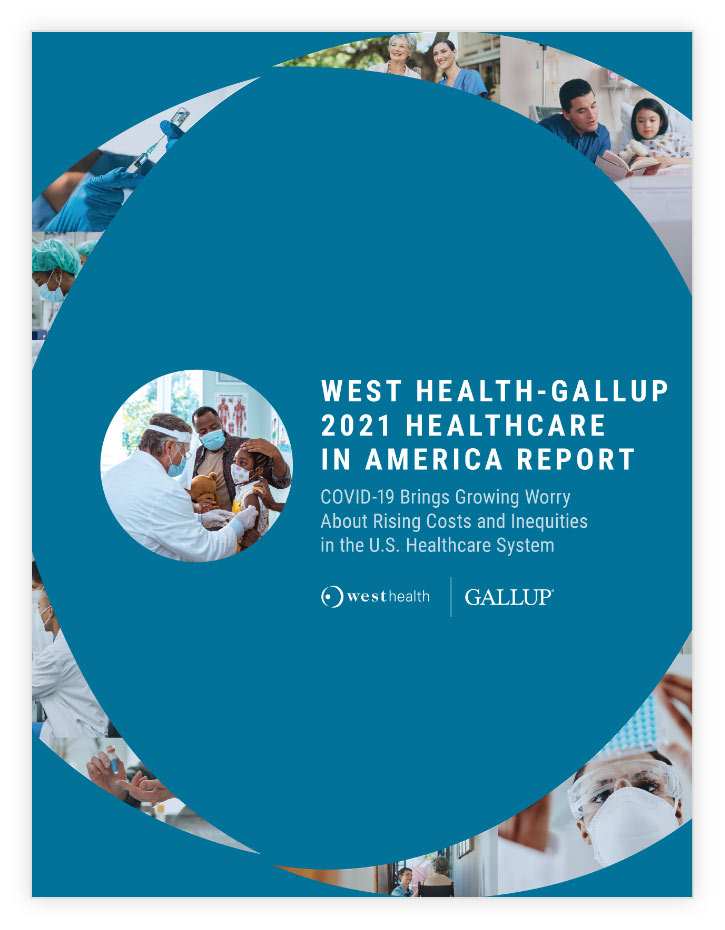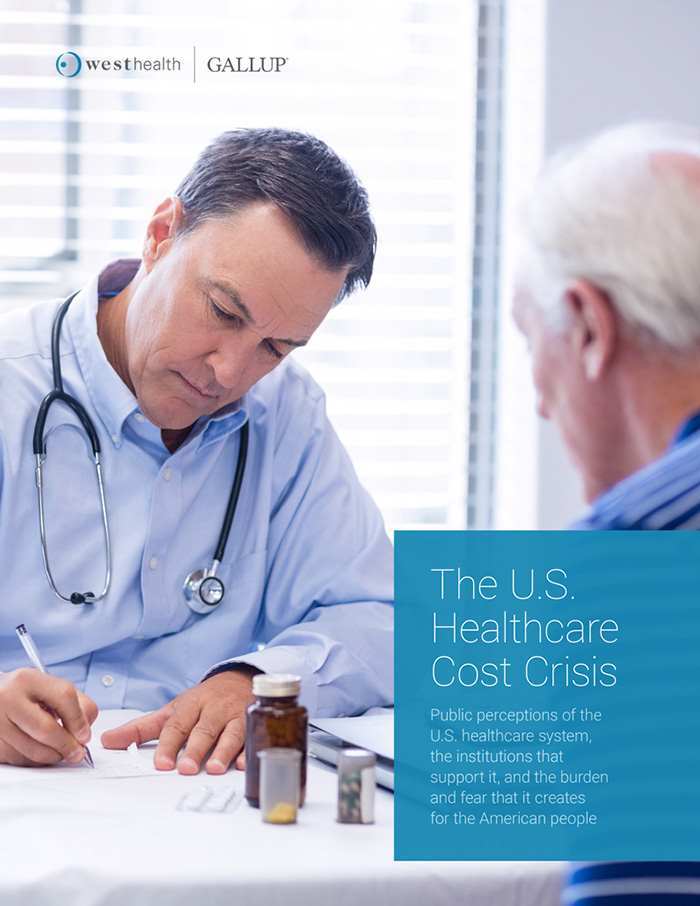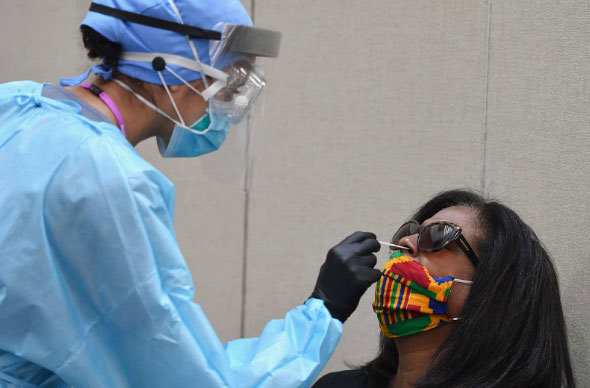West Health-Gallup 2021 Healthcare in America Report
Discover how COVID-19 led to growing worry about rising costs and inequities in the U.S. healthcare system.
At the close of 2021, Americans report a growing struggle to pay for healthcare, increasing concerns about inequities and access in the U.S. healthcare system, and little faith the federal government will enact reform to make things better anytime soon. Regardless of race, gender or income, Americans are more burdened by and worried about healthcare costs. While these issues are not necessarily new, the degree to which they have been heightened or exacerbated by COVID-19 has reached an all-time high since the beginning of the pandemic, according to measurements by West Health and Gallup.
In 2021, Americans witnessed the continuation of a once-in-a-century pandemic, the development of lifesaving vaccines, the politicization of masking and vaccination policies, nursing shortages, worsening health conditions, a growing mental health crisis, action by the Supreme Court on healthcare, massive inflation, and efforts in Congress to pass major healthcare reforms.

However, decades of failed action and the recent weakening of bold measures to lower costs have left Americans at the end of the year viewing a future as bleak as the past.
The 2021 Healthcare in America Report, drawn from a nationally representative sample of more than 6,600 U.S. adults, provides a comprehensive look at changing attitudes, behaviors and trends in healthcare. The report measures the outsized effect of the ongoing pandemic on public attitudes as the country tries to recover physically, mentally and financially.
Download this report to learn:
- how the healthcare cost crisis has deepened in 2021
- how the increasing cost of care is affecting the consumer outlook for 2022
- how the cost of healthcare is shaping election choices
- how COVID-19 has affected views of the U.S. healthcare system
Read the report press release.
The 2021 Healthcare in America Report provides a comprehensive look at changing attitudes, behaviors and trends in healthcare, measuring the outsized effect of the ongoing pandemic on public attitudes as the country tries to recover physically, mentally and financially.
Top West Health Articles
Explore Previous West Health Report

The U.S. Healthcare Cost Crisis
Discover how the high cost of healthcare impacts Americans' personal finances, individual healthcare choices and perceptions of the U.S. healthcare system. A new survey from West Health and Gallup reveals financial hardships but gaps between political parties on the overall quality of the system.





